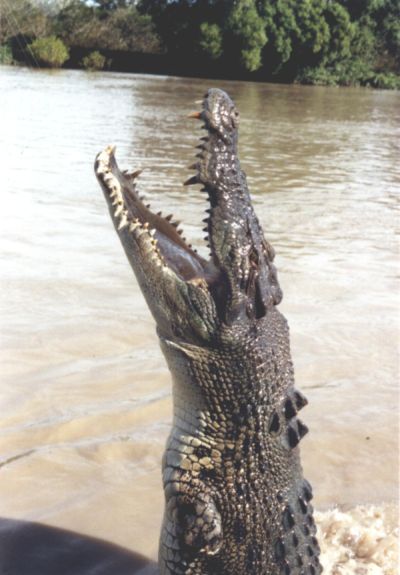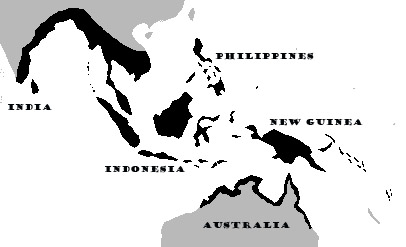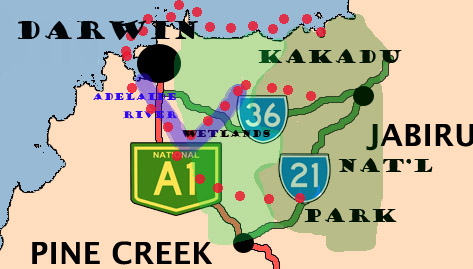
Crocodiles and humans are natural competitors. In all our history they have been there, silently waiting in the waters of our shared world, and only in our most recent history have we had the wisdom to see their worth, magnificence and need for protection. Now, in northern Australia, we come once again into conflict with these ancient and awesome predators over who shall use the water and the resources that lay there. Will our wisdom win out?
The saltwater crocodile is the largest surviving species of crocodilian. Animals of over 2000 pounds are not considered extraordinary. They live in an area ranging from the eastern coast of India, through all of Indonesia, north to the Philippines, south to northern Australia and far out into the Pacific, perhaps as far as 1500 miles from Australia. (See range map)

These animals cross enormous swaths of ocean, but the sea is but a highway, they hunt, raise their young and live in freshwater. Their size and amazing abilities of strength and stamina have made them known human predators. That means that unlike sharks, that occasionally kill a swimmer, but rarely actually consume one, large crocs will eat a person.
Darwin, Australia has, over the passed 4 years, (2008) suffered the loss of several of it’s residents to what has been called a “crocodile invasion.” Most Australians respect and admire their local dinosaur but they draw the line when it’s eating their kids! Why these animals have suddenly turned up in Darwin has been a mystery, which with a little investigation by croc biologist, Adam Britton, and others, can now be explained.
Historically the “salties” lived all over northern Australia, and until 1945 went unheeded, due to low human populations. But after World War II crocodile hunting became a kind of fad, and thousands were destroyed. In 1971 the Australian government banned all crocodile hunting, fearing that these beasts were close to extinction, due to numbering under 3000 total individuals.
With no humans destroying them the croc numbers have risen dramatically. The males are territorial animals that do not suffer young bucks in their territories. This has pushed the younger, smallish crocs of around 9ft out of the areas they have lived for the passed 40 years into places like Darwin. In 1971, Darwin had 2,500 human inhabitants. Today the number exceeds 120,000. The crocodile population now exceeds 100,000. A bad outcome was almost inevitable and predictable.
The map below shows the area where the crocs have sheltered, in Kakadu Nat’l Park and the red dots show the routes of migration, east to west, (or right to left) through a wetlands area and up the Adelaide River. The crocs have taken over the 300 miles of intervening territory.

At present all crocs that enter the city limits and harbor are caught. The males are turned into burgers and steaks, and the females are used for breeding more crocs in the skin farms. This isn’t a solution, it’s only a stop gap measure for a very difficult problem; how do you keep crocs and humans apart so both may use thewater ways and land?
Unfortunately, there are no answers.





Comments